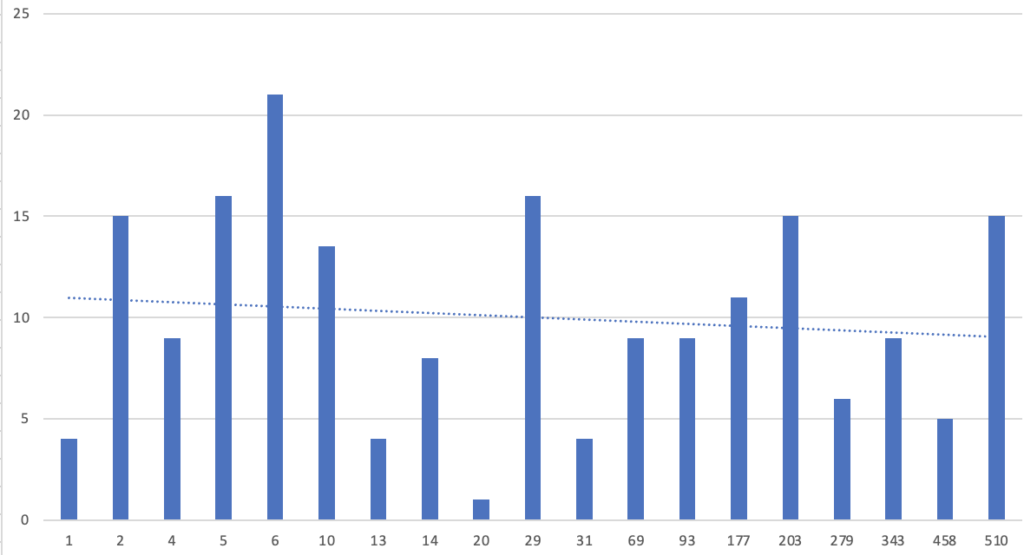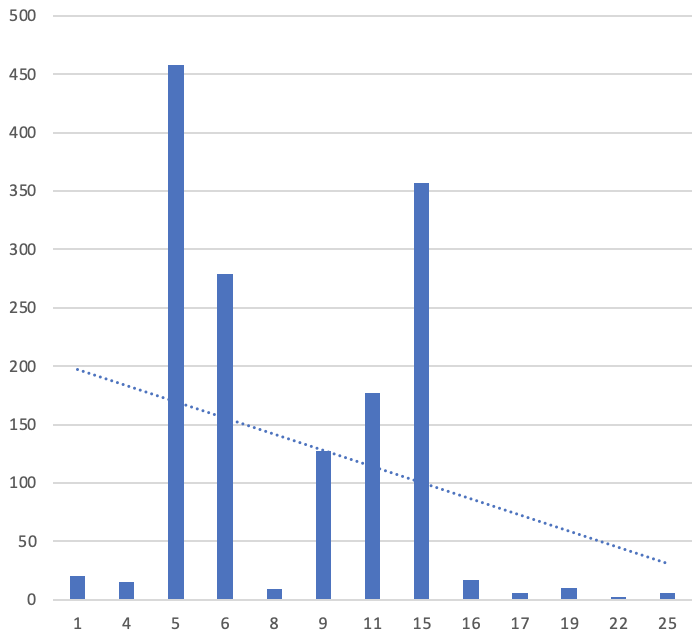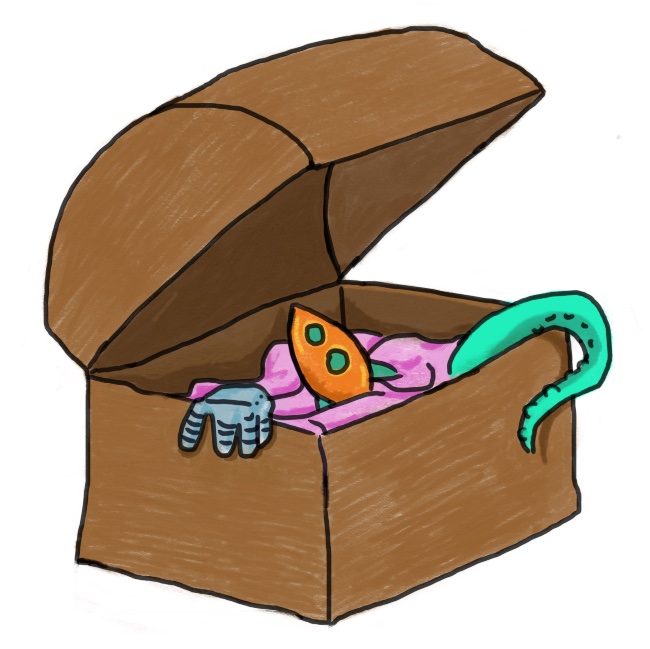A piece of advice I have often heard is that your story must clue the reader in to its genre quickly. “In the first line, if possible.”
I remember getting quite tangled up in my thoughts, trying to introduce character, setting, plot AND genre in one sentence. Exhausting! Impossible!
But was it really a good piece of advice?
I was going through my old journals (I was trying to re-trace the progress of my novel Mot the Stupid, started in around 2003 and abandoned in 2007 and picked up again in 2018. THAT is going to be another blog post) and I found, of all things, a little chart I’d made of the number of words in all my sold stories before a speculative element was named. (Ie, how many words before “robot” or “spaceship” enter the story.)
This was in 2018, so I only had 25 published stories. (AW!) Having this nice little list of stories and numbers of words, I decided to put them into Excel, and add the number of rejections each story got before selling, as perhaps an indicator of how successful the story was in “grabbing the reader.”
Here’s the chart – X axis is words to spec element, Y axis is rejections before selling, averaged (some stories had the same number of words to spec element.)

It looks like there’s not much of a correlation, though the trendline indicates a slight preference for more words before spec element leading to a quicker sale? Can that be right?
I swapped the x and y, and the trend is more pronounced:

The four stories in my first 25 sales with the most rejections before sale (16, 19, 22, and 25) all had under 20 words to speculative element, whereas the four stories with the most words-to-element(510, 458, 343, 177) all had under 15 rejections before selling.
Not a big sample size, and I’m not really motivated to look through all of my sold stories and count words, but let’s look at it qualitatively rather than quantitatively?
The four with lots of rejections and quick jump to spec element:
Stepping Out of Stream
The Robots Karamazov
Micheal Doesn’t Hate His Mother
Hold the Moment
These are some pretty good stories. I’m proud of them. They took a while to sell, but at least “Michael” went on to be well-received critically. I recall “Robots Karamazov” (which mentions the narrator is a robot in the first line) suffered from being literary fanfic — many rejection letters mentioned “It’s nice. I’ve never read the Brothers Karamazov so I feel like I’m missing something.”
Two of these stories had their titles changed after selling, and their original titles may have been off-putting. “The Time Non-Traveller” for “Hold the Moment” and “The Machine” (Ugh, I know!) for “Michael Doesn’t Hate”
Now let’s look at the four that took their time to get speculative and sold quickly:
Infinite Boyfriends
Keep Talking
Fourth Dimensional Tessellations of the American College Graduate
We All Scream
Hrm … more humor in this bunch. “Infinite Boyfriends” and “We All Scream” are funny stories. “Keep Talking” and “Tessellations” however are among my biggest critical successes.
All four of these stories sold with their original titles unchanged.
In conclusion … I don’t have a conclusion. Lots of things affect how many rejections a story gets. Did I get to submit it to a lot of places? Was it funny? Too like other stories published recently? Was the title bad?
But I think if you send a story to Science Fiction Stories Magazine, they already know it’s science fiction… as will the reader when they open said magazine, so I don’t think you necessarily need to “signal” genre in the first sentence, or even the first page.


